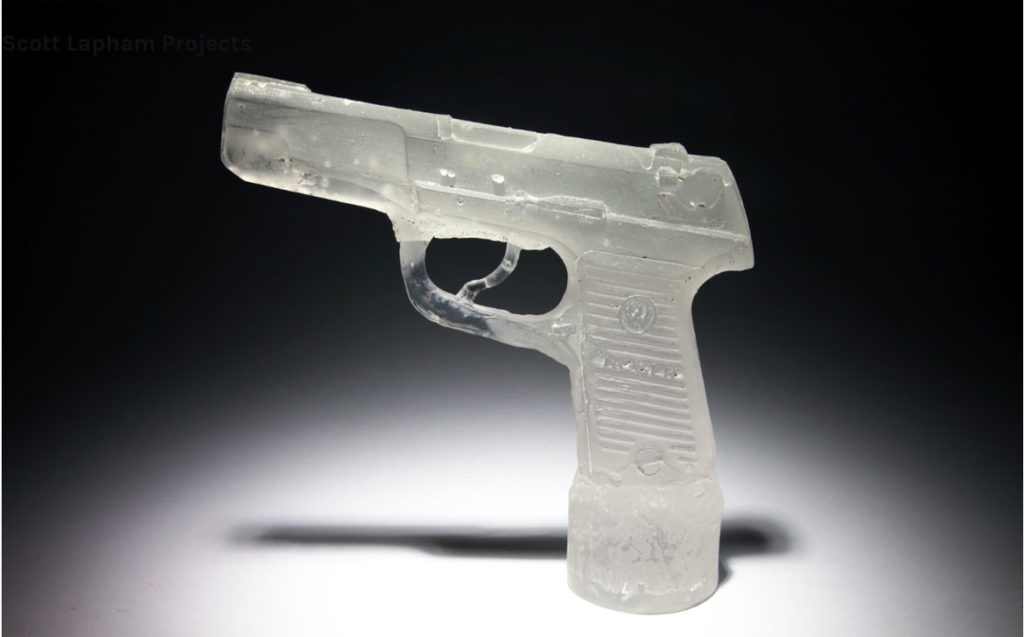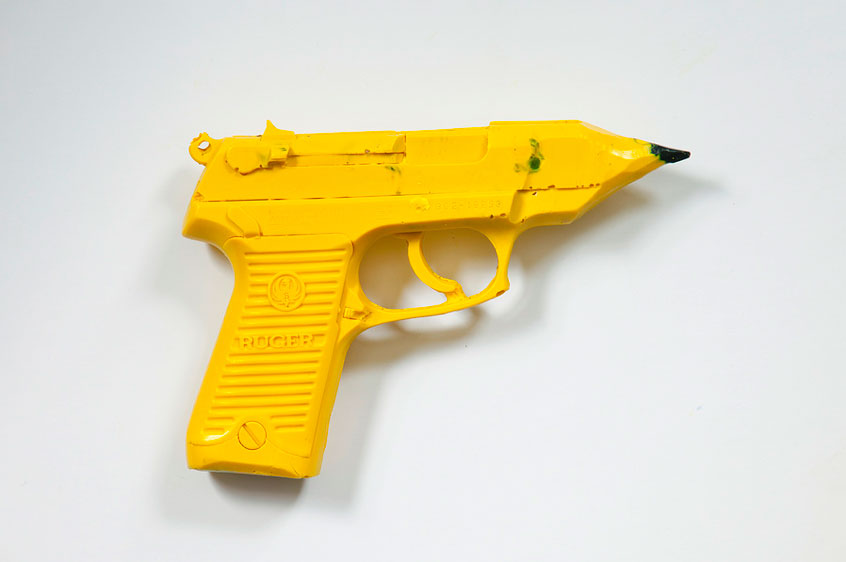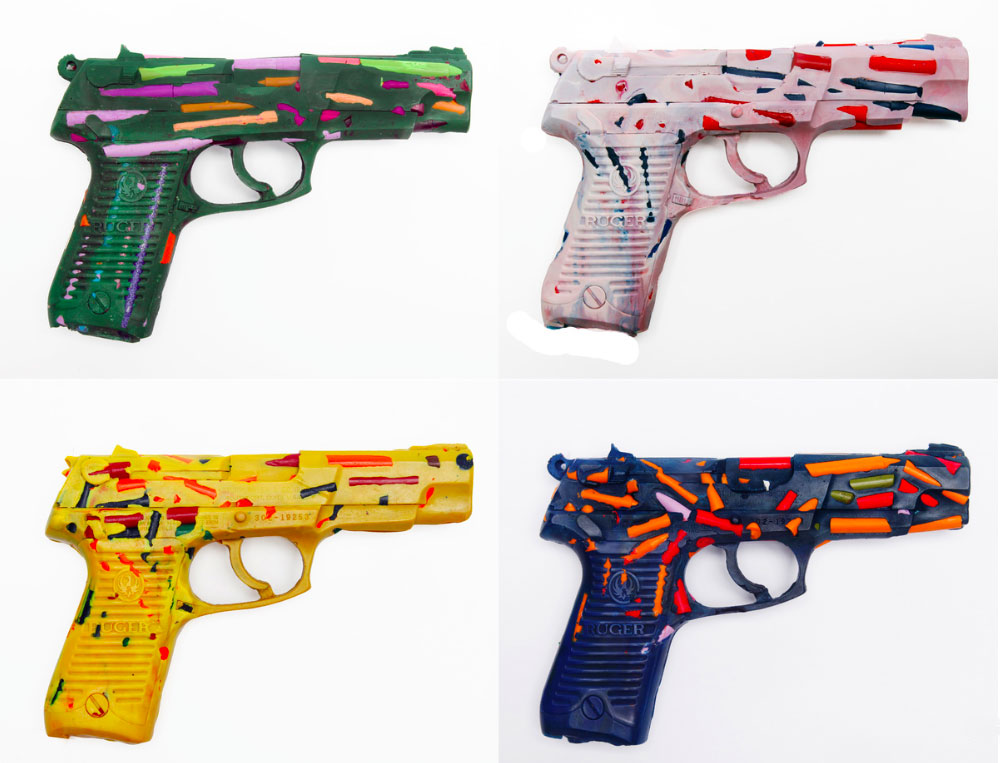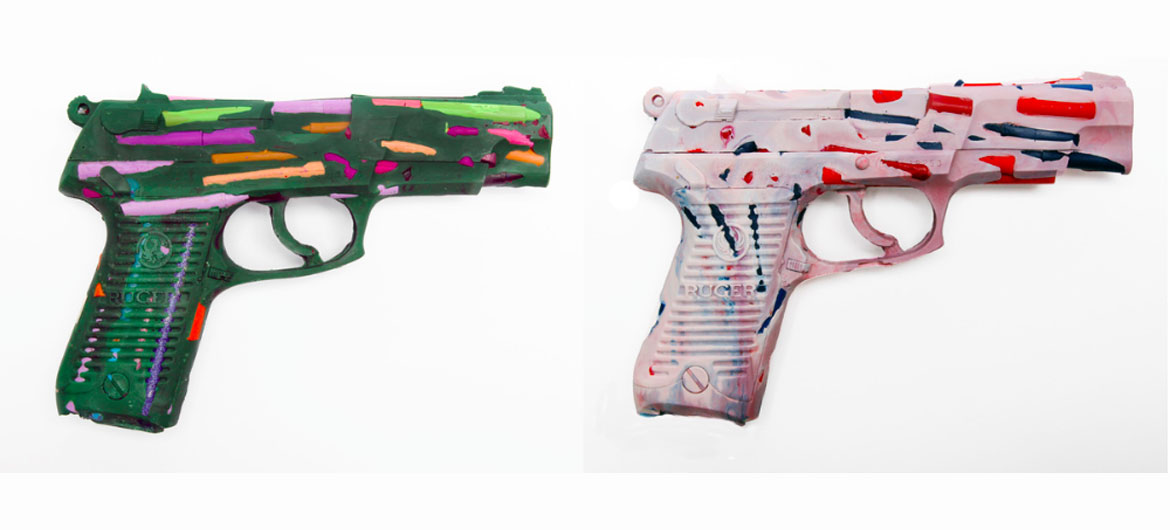For years, Providence photographer and sculptor Scott Lapham has taught art to teens and young adults.
“Four of my students have been lost to gun violence,” he says. “It was a cumulative kind of awakening of how insane and raw it is that there are so many firearms in our communities, how easy it is to get them. It’s just a joke.”
“In urban communities,” Lapham says, “it’s often street beefs between young males. … And that’s what happened to my students.” But one doesn’t have to go looking for trouble. “One of my students was buying a sandwich at a food truck at night and got shot and died. … They’re kids. And I mean that in every sense of the word.”
Looking to “have some kind of response to gun violence that I thought would be positive,” in September 2015, Lapham launched the “One Gun Gone” project, which is being featured in an exhibition at Providence’s Pop Up Shop, 233 Westminster St., through at least Jan. 26.
“It’s very easy to feel overwhelmed or cynical,” he says. “I wanted to create a space where students from the neighborhoods in this area most affected can think about it.”

Lapham began by legally buying a handgun. In collaboration with “One Gun Gone” members (teens and twentysomethings who, these days, meet weekly with him, usually at Providence’s New Urban Arts) and adult artists, he “made a mold of it. And from that mold me and my students have challenged ourselves to make as much art as we can that talks about gun violence.”
They’ve cast guns out of crayons (“Children are being affected by learning about gun violence too early”) and translucent glass (“We think of a gun as aggressive and powerful; we think of glass as brittle”). They’ve made gun-shaped functional candles (“We wanted to make a sculpture about why people were being murdered in the first place”). They’ve molded crayons into guns that resembled pencils—to say education can reduce gun violence, but also seen as speaking about school shootings. They’ve given crayon guns to teams of high school students and grown up artists to transform into their own artwork.

“Guns are seductive. They’re powerful,” Lapham notes. “How can the artwork be more valuable than the gun?” They aim to raise $5,000 from sales of “One Gun Gone” artworks, T-shirts and posters to fund a gun buy-back in partnership with the city of Providence, Rhode Island State Police and Providence Police—to buy guns back from members of the community. “When we sell our artwork, we’re going to buy more guns off the street.”
Of course, Lapham and his collaborators acknowledge that the number of guns they’ll be able to guy will be tiny compared to the number of guns out there. He says, “Symbolism matters and it gives us a way to change ourselves and hopefully has ripple effects that change other people’s opinions.”
If this is the kind of coverage of arts, cultures and activisms you appreciate, please support Wonderland by contributing to Wonderland on Patreon. And sign up for our free, weekly newsletter so that you don’t miss any of our reporting.

